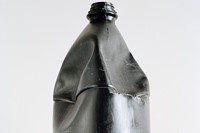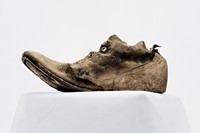For his latest photo book, Benjamin Rasmussen spent over eight years shooting people across 43 American states. The result is a meticulous deconstruction of American identity and citizenship
For US-based photographer Benjamin Rasmussen, ‘home’ has always proved an elusive concept. Born to an American mother and a Faroese father, Rasmussen spent the first 18 years of his life in the remote southern islands of the Philippines before uprooting to the US for college. His latest monograph, The Good Citizen, is a culmination of years spent questioning his own identity and the privilege that accompanied it. Having now settled in the US, the book offered an opportunity to interrogate what it means to be American and, in his own words, “try and understand some of the moral complexity that’s part of it.”
True to his claim, The Good Citizen is a meticulous deconstruction of American citizenship. Combining archive photographs with his own, Rasmussen’s investigation spanned eight years and 43 states, during which he met with over 500 people. The resulting five chapters resemble a comprehensive case file, embracing disparate nuances within American identity and revealing a complex genealogy that connects its contemporary manifestations with their origins. In the first of five themed chapters titled, Violence (others include Exclusion, Archetype, Beauty and Whiteness and Surveillance), Rasmussen cites the infamous Dred Scott decision as an example of how citizenship has been weaponised by the American state since its inception. This landmark 1857 Supreme Court case maintained that the rights of the constitution did not apply to the enslaved Scott, and by extension, to anyone with African heritage. While researching the case, Rasmussen journeyed to Ferguson, Missouri, in the wake of Michael Brown’s shooting by police, only to discover that Scott was buried a few miles down the road.
“That was the starting point for me,” says Rasmussen. “The moment I realised how interconnected all this stuff was and that it couldn't fit into one box.” The more he looked, the more clearly he saw American citizenship for what it was – a carefully constructed system whose mechanics were so seamlessly embedded within American life they remained barely perceptible. “I wanted to investigate that de jure structure that has allowed my experience [as a white American citizen] to be so different from all these people that I know,” says Rasmussen. “Americanism has grown from something very exclusionary, but those aspects of whiteness and power remain largely invisible.”

In identifying these systems, Rasmussen untangles the convoluted legal infrastructure behind American citizenship while documenting the experiences of those caught up in its inner workings. In Beauty and Whiteness, for example, he juxtaposes portraits of beauty queens across America with colour cards formerly used to determine skin tone in court, as well as a list of every racial prerequisite case in the US that had attempted to define who was white and therefore eligible for naturalisation. In Exclusion meanwhile, testimonies of Japanese Americans placed in concentration camps during World War II appear next to a portrait of Phi ‘Tommy’ Pham, a green card holder who faced deportation in 2021 after serving a prison sentence without being naturalised.
As in his previous projects – By The Olive Trees (2013) and Marshall Fire (2022) – Rasmussen’s use of text and found objects elevates this investigation with haunting poignancy. In the final chapter, Surveillance, images of discarded water jugs and camouflage clothing found along the US-Mexico border crossing offer a powerful invitation for the viewer to form their own conclusion on the lives of those to whom they once belonged. Like the rest of the book, Rasmussen is not interested in providing neat answers, but rather in provoking further scrutiny and questions. “I want people to appreciate how thin the line between the past and the present is,” he says. “I think to be a member of a society is to choose to engage with those complexities.”
The Good Citizen by Benjamin Rasmussen is published by Gost Books and is out now.






